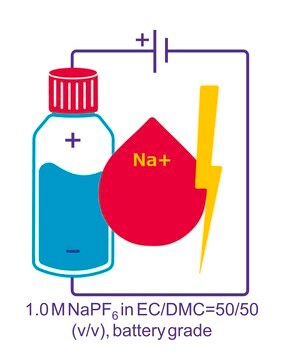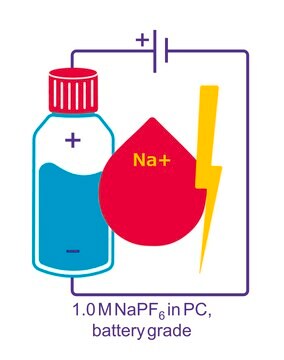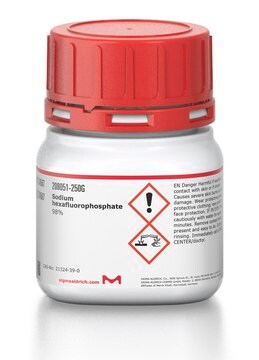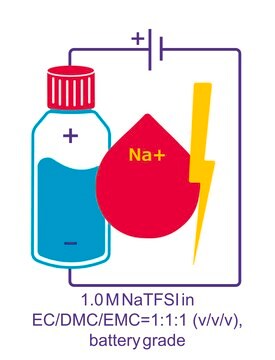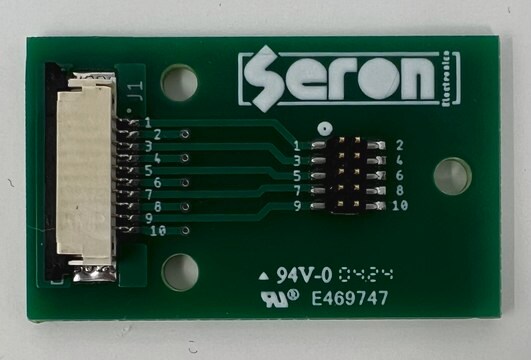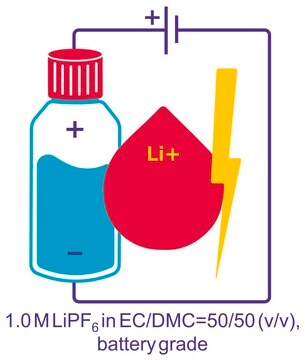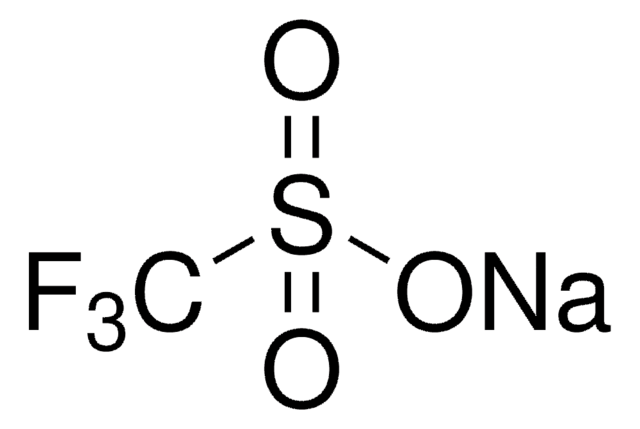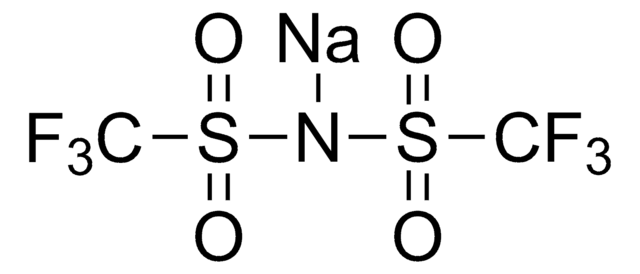935972
Sodium hexafluorophosphate solution

in ethylene carbonate, dimethylcarbonate, and ethylmethylcarbonate, 1.0 M NaPF6 in EC/DMC/EMC=1:1:1 (v/v/v), battery grade
Synonym(s):
1.0 M NaPF6 in EC/DMC/EMC
About This Item
Recommended Products
grade
battery grade
Quality Level
form
solution
greener alternative product characteristics
Design for Energy Efficiency
Learn more about the Principles of Green Chemistry.
sustainability
Greener Alternative Product
concentration
0.95-1.10 M (NaPF6)
impurities
≤100 ppm Acid
≤100.0 ppm H2O
application(s)
battery manufacturing
greener alternative category
SMILES string
[Na+].F[P-](F)(F)(F)(F)F
InChI
1S/F6P.Na/c1-7(2,3,4,5)6;/q-1;+1
InChI key
KMADQUOCJBLXRP-UHFFFAOYSA-N
General description
Application
related product
Signal Word
Danger
Hazard Statements
Precautionary Statements
Hazard Classifications
Acute Tox. 4 Oral - Eye Dam. 1 - Flam. Liq. 3 - Skin Corr. 1B - STOT RE 2 Oral
Target Organs
Kidney
Storage Class Code
3 - Flammable liquids
WGK
WGK 3
Flash Point(F)
77.0 °F
Flash Point(C)
25 °C
Choose from one of the most recent versions:
Certificates of Analysis (COA)
It looks like we've run into a problem, but you can still download Certificates of Analysis from our Documents section.
If you need assistance, please contact Customer Support.
Already Own This Product?
Find documentation for the products that you have recently purchased in the Document Library.
Our team of scientists has experience in all areas of research including Life Science, Material Science, Chemical Synthesis, Chromatography, Analytical and many others.
Contact Technical Service